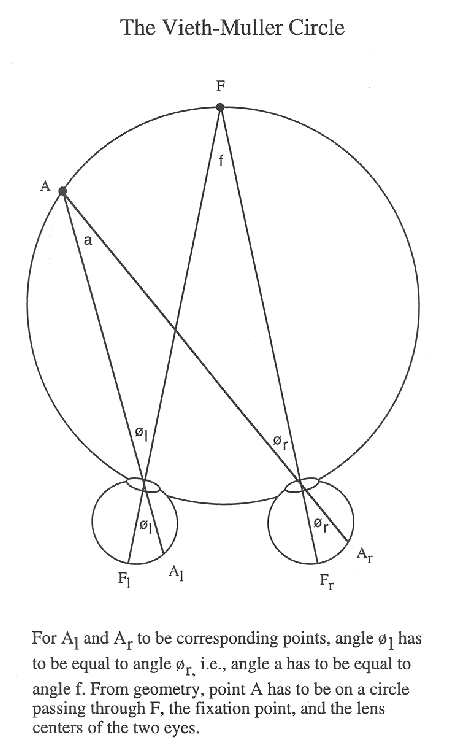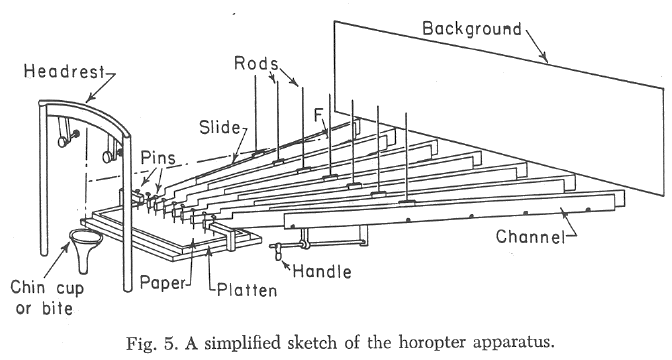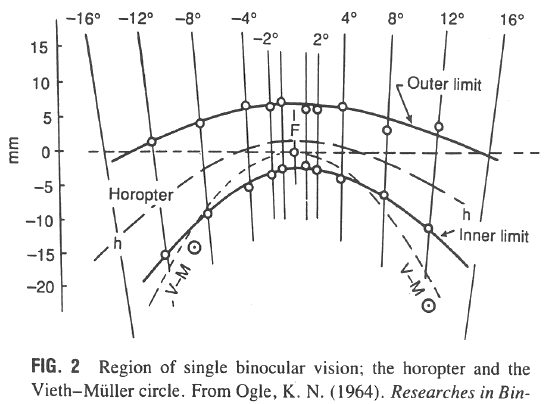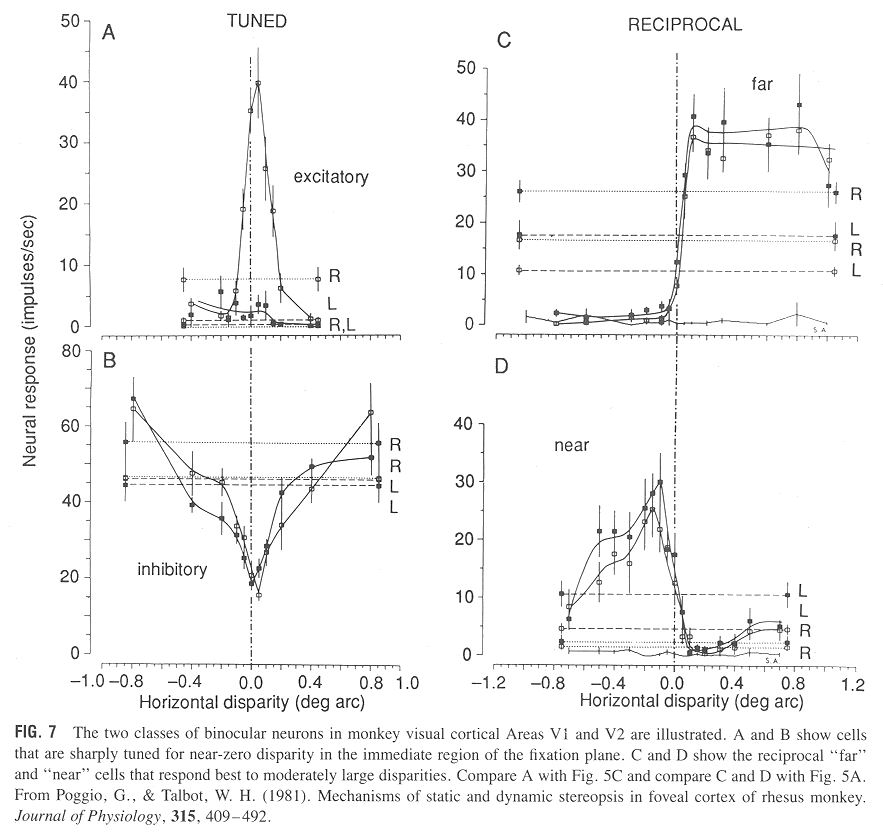The two retinas can be considered as two 2D coordinate systems, with the foveas of the retinas as their origins and the vertical and horizontal directions as their axes. A one-to-one correspodence can therefore be established between the points in the two coordinate systems. Equivalently, consider the case where one fixates on a star at night, its image will form on the fovea of each retina and the visual axes of the two eyes are in parallel (as the star is at great distance). And the images of all other stars fall on the corresponding points on the two retinas.
When fixating on a certain object F, its images Fl and Fr are formed on the fovea areas of the left and right retinas. At the same time, images of objects located at other 3D positions are also formed at various retina loations. If the eyes could be modeled by perfect spheres (not true in reality), the locus of all 3D points whose images fall on the corresponding points of the retinas is a sphere, whose horizontal cross section is the Vieth-Muller horopter circle (Vieth 1818, Muller 1826) as shown in the figure below. Or equivalently, the two rays projected outward from each pair of corresponding points (through the center of lens of each eye) always intersect on the horopter circle. Each fixation point has its corresponding horopter circle.

Horosper can be determined experimentally, as shown in the figure below (Ogle 1950), based on the assumption that the stereoptically perceived depth is caused by the binocular positional disparity. That is, all points of zero disparity are projected on corresponding points on the retinas and should therefore have the same perceived depth as the fixation point. In the experiment, the subject adjusts the distances of objects along various directions so that they appear to be in the same frontal plane, i.e., their images fall on the corresponding points and therefore they are on the horopter.

The experimentally determined horopter deviates from the Vieth-Muller circle and is closer to the objective frontal plane passing through the fixation point. Its specific shape depends on the distance of fixation point and could be concave, flat or convex. (Note that in the figure the vertical scale for disparity is increased tenfold.)

The images of any object on the horopter (including the object we fixate on) fall on corresponding points of the two retinas and only one object is seen, as we normally experience. This is called binocular single vision or binocular fusion. Moreover, any object within the fusion range - a certain neighborhood of the horopter including regions both in front and behind the horopter (between the inner and outer limits in the previous figure) - is also seen as single. The images of such an object may fall on noncorresponding points with limited non-zero disparities.
Double vision, also called diplopia as a disorder of vision, is usually caused by paralysis of eye muscles. But this could also occur in normal vision to objects that are far away from (either behind or in front of) the horopter corresponding to the current fixation. To see this, find two objects, one much farther away than the other, that can be seen simultaneiously. The object that you fixate on is on the horopter (inside the fusion range) and seen single (its images are formed on corresponding points), while the other object not fixed on (outside the fusion range either farther away from or closer to the eye) is seen double as its images are formed on non-corresponding points of the two retinas with major disparity. Depth perception and double vision, although both caused by object images falling on non-corresponding points on the retinas, should be distinguished.
Depth may be perceived by binocular positional disparities of the objects. About half of the neurons in areas V1, V2 and V3 are sensitive to binocular disparity (Gian Poggio et al 1981, 1988). Some of these cells are either excited or inhibited by near-zero disparities, and others are either excited by positive disparity (corresponding to objects farther than fixation point) and inhibited by negative disparity (corresponding to objects closer than fixation point), or excited/inhibited by the opposite disparities, as shown in the figure.
